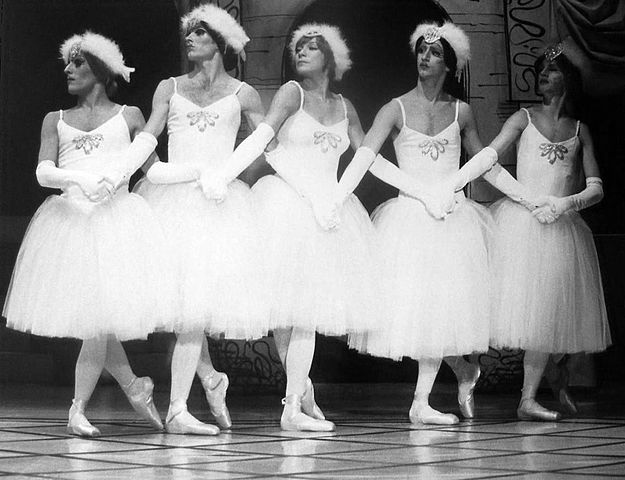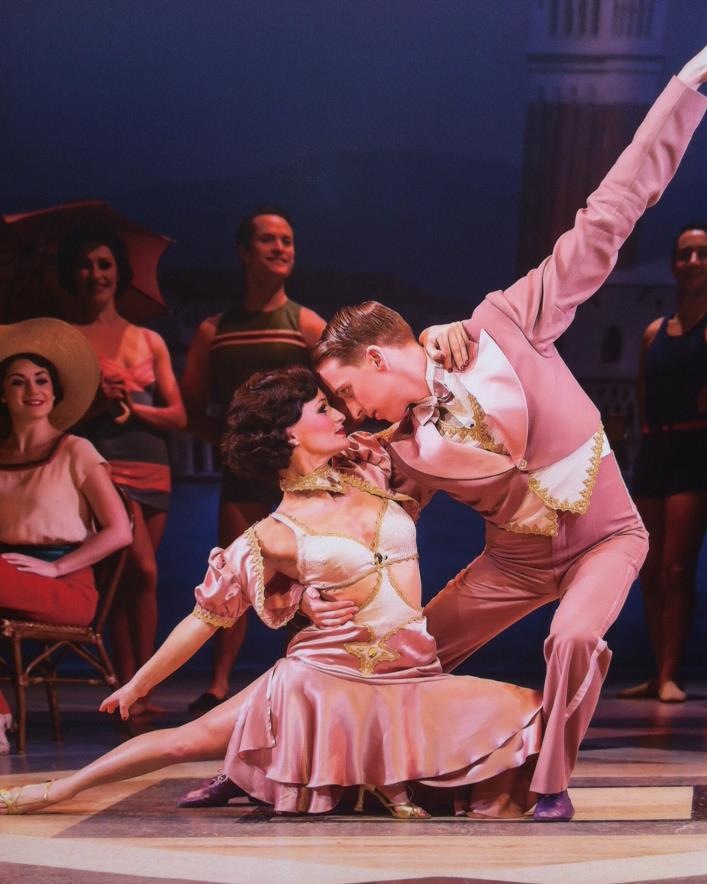
Lucy Jane Adcock is an incredibly talented and accomplished musical theatre star-in-the-making. She is currently performing in A Chorus Line at the London Palladium and understudies Scarlett Strallen, who plays the lead Cassie. Lucy Jane has also performed in other musicals such as Chicago, Fame, Starlight Express and Beauty and the Beast, giving her a huge repertory of exciting and inspiring jobs.
Coincidentally Lucy Jane met her husband, Jon Cooper, on the Starlight Express tour – he works as a bass player and was working in the Starlight band when the performing pair met.
Having trained at Laine Theatre Arts, Lucy Jane’s dance beginning is never far from her mind, reminding herself of the gift she has to give to audiences and how far she has come to achieve so much on stage. Here Lucy Jane shares a few words on her training, jobs and belief in what she does so well…
When did you begin dancing, and why?
I started dancing when I was 3 at Caren Lumsdale’s School of Dance in South Shields. It was actually because of my babysitter at the time. She mentioned to my parents about the school so off I went with tap shoes in hand. Unfortunately I was the most unconfident, uncoordinated child ever and I’m sure I was a bit of a nightmare for Caren at times. The only thing I did have was determination and willpower, which luckily helped me stick it out until I improved!
What were your early years of dancing and training like?
I only trained in tap for the first few years until I was about 7. I think that’s why tap still remains one of my absolute favourite styles of dance to perform and to watch. I was quite late starting my ballet training which I always regret because I’ve always struggled with my technique! Luckily it hasn’t really stopped me! I progressed with the Lumsdale’s and competed in lots of competitions and festivals, and as the years went on I realised how much I LOVED performing and the thought of actually making a living doing what I loved was very attractive!
How long have you been performing? Did you start young?
I’ve been performing for many years but professionally performing since 2002. I had my first taste of professional work whilst training. I was ensemble in two pantomimes in 2000 and 2001. I was lucky enough to leave college and go straight into the national tour of Disney’s Beauty and the Beast as a Silly Girl. I can’t even begin to tell you how amazing this experience was… It still remains one of my all time favourite jobs! I couldn’t believe I was getting paid for it! How naive!! Since finishing the tour I have been very, very fortunate to have performed in many West End and touring shows.
Where did you train and what was a typical day like?
I trained at Laine Theatre Arts, an amazing college in Epsom, Surrey. I remember starting there in 1999 and thinking, this is where I belong! It was a very hard three years but excellent preparation for a career in this business. I think if you haven’t got the stamina, strength and thick skin to get through three years of training then that proves that you haven’t got what it takes! A typical day would be maybe an hour and a half of ballet, followed closely by an hour and a half of jazz, then maybe a small lunch break (if I wasn’t sneaking into another jazz class!),a singing/drama lesson in the afternoon followed by a musical theatre class and there was always something going on after college, a rehearsal for something or performance classes. College would start at 8.30 in the morning and I wouldn’t normally get home until 6 or 7 at night!
But like I said great preparation as there have been times over the years when I’ve had to ‘double up’ on jobs which would mean rehearsing for one show during the day and performing another show at night… Hardcore!
What is a typical day like now?
To be honest every day is different for me. If I take a typical week at A Chorus Line, I often teach or take workshops, so every now and then my days are taken up with this, otherwise if I have a ‘rest’ day, I will walk my dog, maybe go for a small run. It is sometimes on these days that I will maybe have a sports massage or see the osteopath. I have to think a lot about what to eat during the day and what time so that I will have enough energy for the show especially if I am on for my understudy, Cassie! It is the hardest role I have ever played!
Do you still take classes? How do you keep on top of our technique?
I don’t tend to take classes to be honest. Doing a show like A Chorus Line is enough for me. We do quite an intense warm up before each show which helps me keep on top of things. I also teach a lot of jazz classes so this helps too.
I’ve been very lucky over the years to go from show to show so this has kept me fit and at the top of my game. It is very important in my opinion to keep your fitness levels up so if I do have a short break from working I would tend to work-out or run and keep myself looking good for the next lot of auditions!
What’s the best part of performing in the west end?
There are so many amazing reasons why I love working in the West End… The first has to be that it was my absolute lifetime ambition to be working on a West End stage and any day that I feel a bit tired or under the weather I remind myself of this and how many other people would kill to be in my position. Too many people these days take this for granted and I get very annoyed at lazy people with no passion! I feel very lucky to still have this love of what I do after 11 years in the business because obviously it’s not all highs..! I get such a buzz when I’m performing… It’s like a drug for me and I see myself doing it forever. In A Chorus Line, the director Zach asks us, the characters, what we will do when we can’t dance anymore. He’s asked us that question every night for seven months and I still don’t know what I will do. I tell students that I teach that this is the best way to be. When you’re training if you have something ‘to fall back on’ you will tend to ‘fall back’.
Another reason I love working in the West End is the people I get to meet and work with. My rehearsal period for A Chorus Line was just amazing, working with Bob Avian and Baayork Lee. I’ve worked with Stephen Mear and Bill Deamer too and its just so inspiring working with choreographers with such passion, not to mention all of the people I have learnt so much from over the years. I also did a short tour with musical theatre legend Ruthie Henshall who I have always admired. When I did Chicago in the West End it was like a master class for me watching people like Linzi Hately and Leigh Zimmerman.
Which part of A Chorus Line do you enjoy most?
Like I mentioned already I LOVED the rehearsal period of A Chorus Line. I’ve never known anything like it. It was very intense starting with an hour’s boot camp every morning but there wasn’t a day that the whole cast weren’t in tears (of joy!) it was so special and the show is so drenched in history; hearing original stories from Bob and Baayork was so emotional.
Performing this show has been out of this world. My favourite part to play is Cassie of course! I understudy Scarlett Strallen who plays the role, and it is by far the best role I have ever had chance to play. I get to act, sing and dance on my own on the London Palladium stage with John Partridge (who I adore!) – I’m a very lucky girl!
What advice would you give to someone aspiring to be part of the musical theatre world?
There is so much I would want to say to someone aspiring to be in this business. The first would be exactly what Miss Laine said to me at my audition for Laine Theatre Arts. If there is even a shred of doubt in your mind as to whether you want to do this for a living then leave now. This business requires 100 percent dedication and you end up sacrificing a lot over the years to get to where you want to be. If you’re not prepared to give that then there are 1000 other people waiting in the wings!
Try to build a thick skin, there are so many knockbacks and times when you feel like giving up. We are generally very sensitive in this world, it really helps after a bad audition to forget it and move on, obviously easier said than done, but that is a skill I’m still trying to perfect many years on! The final piece of advice I’d give is to always give 100 percent when you are onstage, whether it be a cruise, a pantomime, a summer season, a UK tour or a West End show. Whenever you are performing in front of a paying audience you must remember what you’ve been through to get there and you never know who might be watching. It could be the casting director of your next big job! Too many people get complacent once they’ve been in a job for a few months, I think it’s very important to always remind yourself of why you’re there and how shortlived this career can be. In the song we sing at the end of A Chorus Line, ‘The gift was ours to borrow…’
What is the best part about dance and performing for you?
This is one of the toughest questions. As I explained a little earlier performing is like a drug for me and I am at my happiest and most content in life when I am working hard and doing something that I love. I have mentioned earlier in the interview how fortunate I have been over the years to do some amazing shows but along with luck also comes a lot of hard work and sacrifice. I think knowing how much work has gone into that one moment on stage is another amazing feeling. Sometimes I can’t believe I get paid for what I do! I remember saying when I was at college that Fame was my dream show: I said “I’ll sweep the stage on that show just as long as I’m there!” I was lucky enough to do Fame in 2004 in the West End. So, if you believe in ‘The Secret’ and putting it out into the universe, it definitely worked for me on that one!
What’s next for you?
A Chorus Line will be a very hard show to follow for me. I can’t believe it’s coming to an end so soon. I’m very much hoping that it goes on tour at some point next year as I don’t feel quite ready to give it up yet. Knowing it will tour will make it easier for me to say goodbye to it at the Palladium! I live from month to month really, but all I know is I was put on this earth to perform and I will continue to do so until my body tells me to stop!
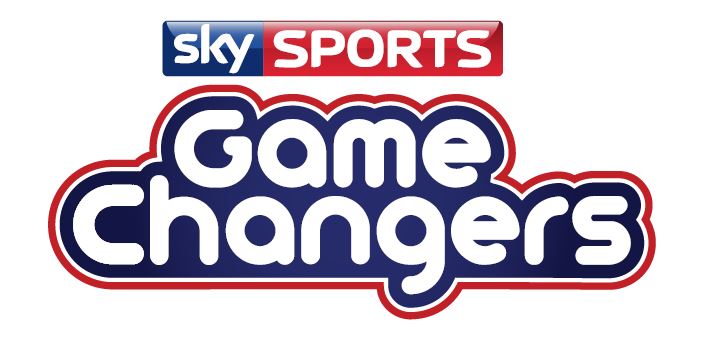 Sky Sports has recently launched an initiative to get more children involved in sport by launching ‘Sky Sports Game Changers’ on Saturday mornings. An both an incentive and an inspiration, the show will feature regular appearances from a host of sports stars and Sky Ambassadors including David Beckham and Jessica Ennis-Hill to persuade children to get active and get involved.
Sky Sports has recently launched an initiative to get more children involved in sport by launching ‘Sky Sports Game Changers’ on Saturday mornings. An both an incentive and an inspiration, the show will feature regular appearances from a host of sports stars and Sky Ambassadors including David Beckham and Jessica Ennis-Hill to persuade children to get active and get involved.
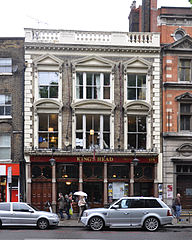 What with funding news, openings of shows, closing shows, pay and tragic passings of life, theatre is never far from reported news. In a more political stance, the King’s Head Theatre in Islington has responded to Russia’s anti-gay laws in a reaction to the escalating violence and oppression towards gay Russians after Putin’s anti-gay legislation and the current high-profile debate over the Sochi 2014 Olympics.
What with funding news, openings of shows, closing shows, pay and tragic passings of life, theatre is never far from reported news. In a more political stance, the King’s Head Theatre in Islington has responded to Russia’s anti-gay laws in a reaction to the escalating violence and oppression towards gay Russians after Putin’s anti-gay legislation and the current high-profile debate over the Sochi 2014 Olympics. Whilst the musical theatre sector of the performing arts industry is by no means its ultimate defining feature, it arguably contains as many strong messages about society as contemporary dance, for example, commenting on the reality of today and issues that weave themselves through life. To take a few examples, many musical theatre productions emit a statement in its own right.
Whilst the musical theatre sector of the performing arts industry is by no means its ultimate defining feature, it arguably contains as many strong messages about society as contemporary dance, for example, commenting on the reality of today and issues that weave themselves through life. To take a few examples, many musical theatre productions emit a statement in its own right. Students at the prestigious musical theatre college Laine Theatre Arts have had a blow ahead of the new academic year. Epsom and Ewell Council, the area in which the college is situated, has withdrawn housing benefits which many of the student receive.
Students at the prestigious musical theatre college Laine Theatre Arts have had a blow ahead of the new academic year. Epsom and Ewell Council, the area in which the college is situated, has withdrawn housing benefits which many of the student receive. Nowadays, music isn’t all about the sound – it’s about the dance too. And some of the best music videos have got some real moves on display. We conducted a survey to find out which are the music videos that most put you in the mood for dancing, and showcase some of the best movers in the industry. So get yourself over to YouTube right now and check out these incredible music videos.
Nowadays, music isn’t all about the sound – it’s about the dance too. And some of the best music videos have got some real moves on display. We conducted a survey to find out which are the music videos that most put you in the mood for dancing, and showcase some of the best movers in the industry. So get yourself over to YouTube right now and check out these incredible music videos.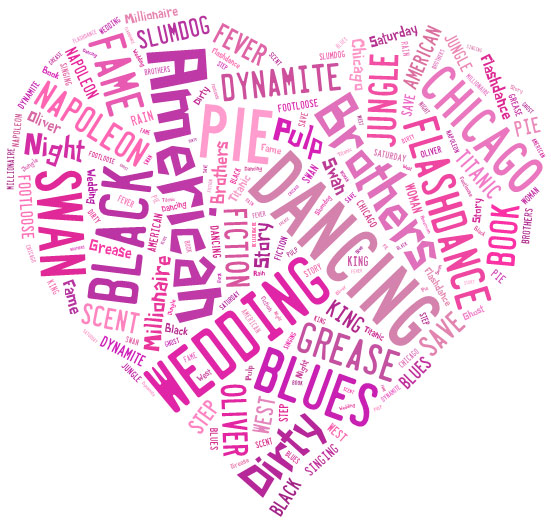

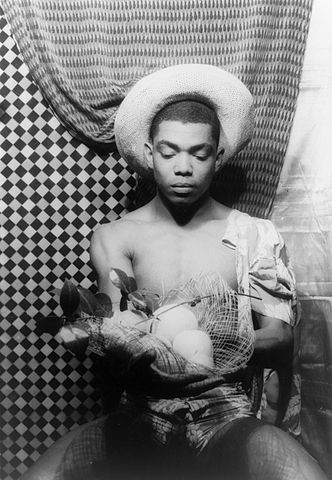 Alvin Ailey is widely regarded as one of the keynote figures in American modern dance, having established the stature of his Alvin Ailey American Dance Theater throughout the world. Ailey was born on 5 January 1931 in Texas, with his experiences of life in the rural South later inspiring some of the most memorable parts of his most popular and critically acclaimed work Revelations, through what he called ‘blood memories’: the blues, spirituals and gospel.
Alvin Ailey is widely regarded as one of the keynote figures in American modern dance, having established the stature of his Alvin Ailey American Dance Theater throughout the world. Ailey was born on 5 January 1931 in Texas, with his experiences of life in the rural South later inspiring some of the most memorable parts of his most popular and critically acclaimed work Revelations, through what he called ‘blood memories’: the blues, spirituals and gospel.